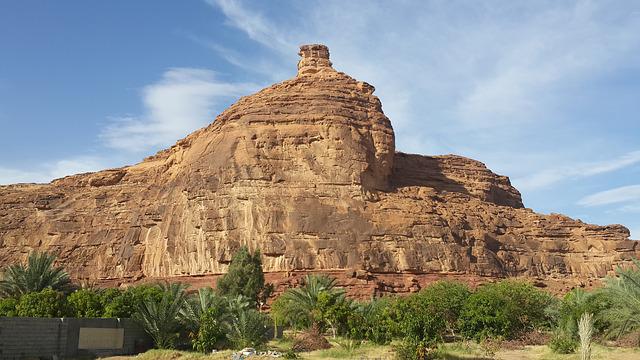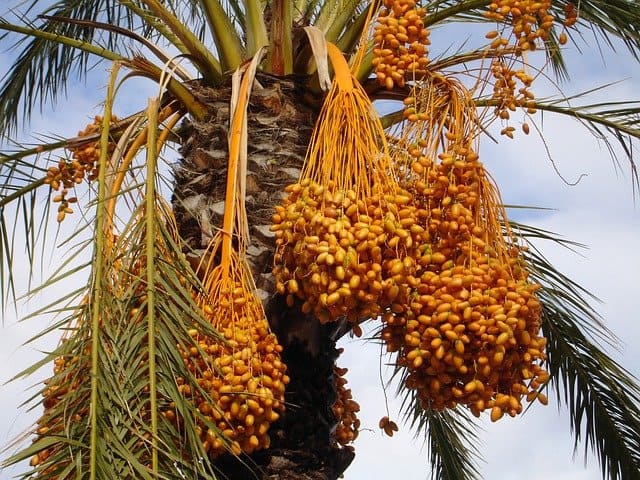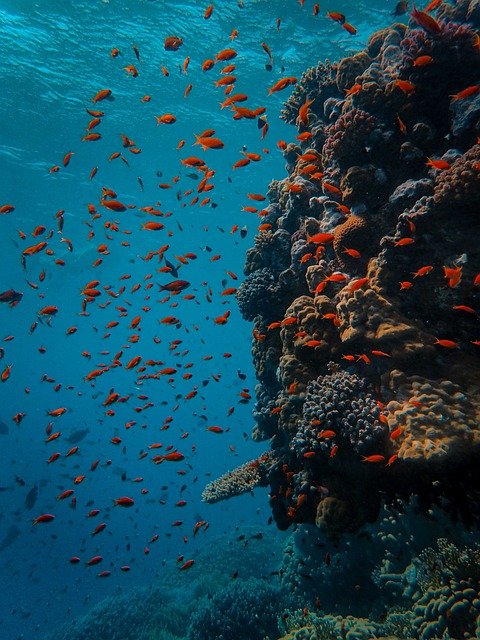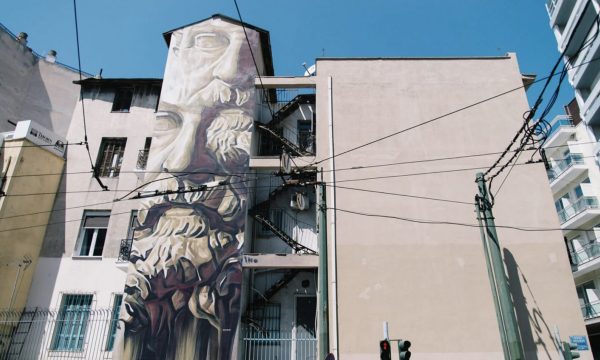5 Unique Places to Visit in Saudi Arabia

Until recently, Saudi Arabia has remained something of a mystery to even the most intrepid of travelers who might have otherwise explored the Middle East. Little had been known or heard about it other than the holy city of Mecca, believed to be the birthplace of Islam, where Muslim pilgrims visit to fulfill their lifelong dream of pilgrimage.
But the country opened to tourists from around the world in September 2019, inviting them to explore its astonishing wealth of historical sites, learn about its rich and ancient culture, experience its unique landscapes, see contemporary life in its cities, and get to know its people.
Today, visiting Saudi Arabia as a tourist is relatively straightforward. Many nationalities can get a multiple-entry Saudi tourist e-visa that is valid for a year and allows a stay of up to 90 days in the country for the purpose of tourism.
Ready to visit? Here are some beautiful, interesting and unique places to visit in Saudi Arabia.
See Ancient Rock-cut Tombs in Al Ula
In the country’s northwest is Al Ula—home to the country’s first UNESCO World Heritage Site, it’s a treasure trove of long lost stories about human civilization and over 7000 years of history in the region. This landscape of barren desert, oasis, red sandstone cliffs, rock-cut tombs, rock formations and ruined cities is among the best places to visit in Saudi Arabia for just how astounding it is.
The highlight here is the rock-cut city of Mada’in Salih, also known as Hegra, that was once the southern capital of the Nabataean people, to whom the existence of the ancient city of Petra in Jordan is credited. In Hegra, elaborate carvings and inscriptions adorn the facades of massive rock-cut tombs.

Al Ula
A short drive away is Dadan, the capital of the kingdoms of Dadan and Lihyan. Of note here are the rock-cut Lion Tombs and the temple at Dadan, where discovered artifacts point to the presence of important and regionally well-connected civilizations.
Nearby, wandering in the old town of Al Ula, with its labyrinth alleys and old ruins, is like walking among the pages of history. There is a small museum and a clifftop fort that offers fantastic views of the rose-colored valley, along with several other viewpoints along the way.
Visit the Largest Oasis in the World
To experience slow rural life, head to Al Ahsa—the largest self-contained oasis in the world, and a UNESCO World Heritage Site. Here, nearly 2.5 million date palms cover an area of over 85.4 square kilometers. This lush landscape is dotted with archaeological sites from the Neolithic period that speak of the oasis’ 6000 years of history.
Besides sampling local date varieties, including the beloved khalasah date at date farms, it’s worth visiting the hot springs (of which there are nearly a hundred) which are a unique natural feature of the landscape. Um Sabah, Al Jawhariah and Al Khodoud are the most famous.

Sample dates in the oasis
For a quick history lesson, visit the village of Al Qarah to wander narrow canyons and ancient limestone cave tunnels. A museum offers insight into the history and ecosystem of the oasis and caves. Climbing the mountain that overlooks the village rewards with breathtaking views of the area.
Afterwards, stop at Dougha Handmade Pottery Factory to watch craftsmen at work creating beautiful pieces. Don’t leave without visiting the atmospheric Souq Al Qaisariya, among the oldest traditional markets in the region, to pick up a unique souvenir. Choose from spices, abayas (traditional robe for women), mabkhara (incense burners) , handicrafts, antiques and more, found in nearly 400 shops.
Al Ahsa is a UNESCO Creative City, recognized for its rich heritage of handicrafts that include textiles and pottery, among others, so you can be sure any locally-made handicrafts you buy here are truly one-of-a-kind.
Breathe in the Sweet-Scented Air in the City of Roses
Located at 6165 ft above sea level, the city of Taif stands on a plateau in southwestern Saudi Arabia. It offers cooler climes—probably why it’s popular with summer tourists—and a beautiful scenery of dramatic mountains, sweeping valleys and rose farms.
The region’s coveted vibrant pink roses bloom in April, and their freshness and special fragrance makes them valuable not only to local perfumers but also international brands like Guerlain.
Rosewater and rose oil are also produced from these roses.The rosewater from Taifi roses also makes its way into the Saudi kitchen through its use in local desserts. It’s possible to visit the rose gardens and buy products made locally at these farms.

Want to learn how rosewater is made? It’s possible to do so from March to April at Al Gadhi Rose Factory where rosewater is distilled using traditional copper pots.
Other things to do in Taif include visiting museums around the city including the one housed in the impressive Shubra Castle, or taking advantage of the mountainous terrain through activities like ziplining.
Go scuba diving in the Red Sea
In ancient times, the small port town of Yanbu was an important stop on the Red Sea spice trade route. While today, much of the action is centered around the harbor area with its old town, lighthouse and night market, the real appeal of Yanbu is found (literally) below the surface. Fondly called the ‘Pearl of the Red Sea’, Yanbu is becoming increasingly popular with scuba divers looking to explore the depths of the Red Sea.

Go diving in the Red Sea
There’s a variety of dive spots to be found here from WWII shipwrecks to rich coral reef systems. Most of these are relatively unexplored versus others in the region and are thriving with diverse marine life like barracuda, squirrelfish and sharks. It’s best to go with one of many local operators offering trips.
There are plenty of beaches in Yanbu, whether you’re after a more family vibe or a more active experience. Visit Yanbu Al Bahr Beach to try sailing, horse riding and watersports like jet-ski. Go fishing at AlNawras Beach. Or spend some time birdwatching at Yanbu Lake where the verdant surroundings of the lake attracts herons and ducks. Thanks to the possibility of being served the fresh catch of the day, the city’s restaurants are an excellent place to try some authentic fish dishes.
Find culture in a quaint art-filled village
There are many reasons to visit the city of Abha: a museum housed in a historic palace built in the 1820s, ancient caves, sublime views from mountains like Jabal Thera and Jabal Sawda, but perhaps most unusual are the culture-rich villages in its proximity.
Of these, Rijal Almaa is unique for its architecture of multi-storied hillside fortresses—exceptional for the region, considering its 350-year-old history. What will probably catch your eye other than the buildings is the traditional attire of the ‘Flower Men’ who don skirts and floral wreaths. Local to the village of Habala, an hour’s drive from Abha, these men belong to the Qahtani tribe. Since 2019, the Flower Man Festival offers tourists the chance to experience their culture.
You’ll also love walking around the village of Al Muftaha with colorful murals and calligraphy on village walls that draw from its artistic heritage. Art galleries and museums in the village offer more information.
Have you visited Saudi Arabia? What would you add to this list?








